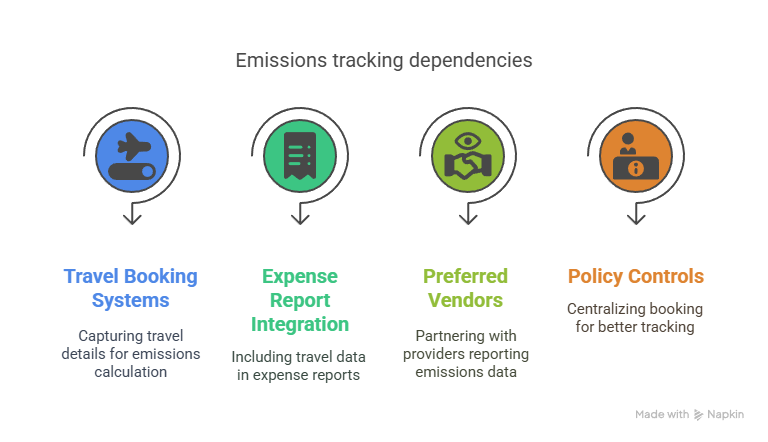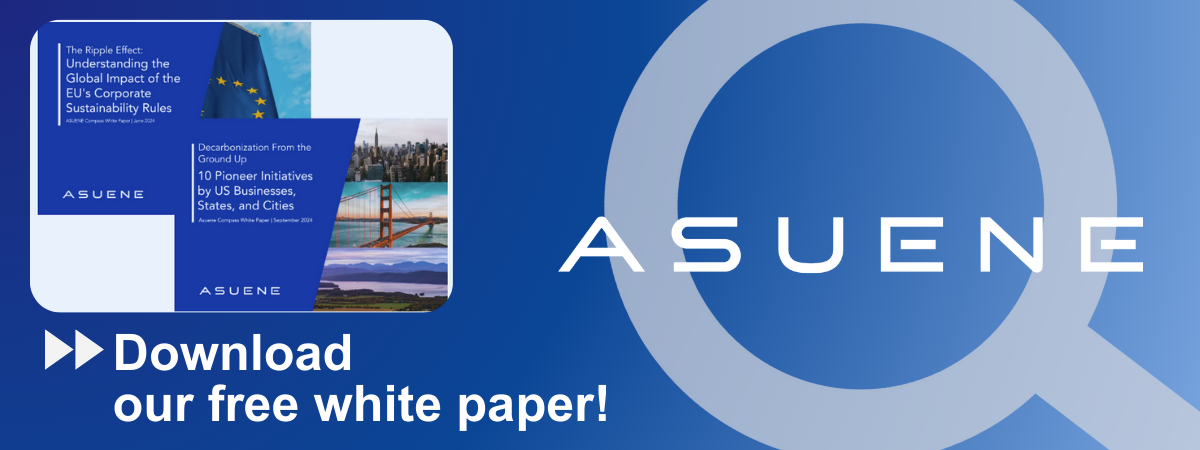- Article Summary
-
Overview of Category 6: Business Travel
Scope 3 Category 6 covers emissions from transportation activities undertaken by employees for business-related purposes in vehicles not owned or operated by the reporting company. This includes air travel, rail, rental cars, and rideshare services. As travel patterns shift post-pandemic, business travel emissions remain a focal point for ESG disclosures and corporate sustainability commitments.
Although often moderate in scale, business travel is highly visible to stakeholders and represents a strategic opportunity for culture change and emissions reductions, especially in sectors like consulting, finance, professional services, and global retail.

Boundary and Scope Definition
Included in this category:
- Commercial flights (domestic and international)
- Rail travel
- Car rentals and rideshare services (e.g. taxis, shuttles, employee reimbursements)
- Business hotel stays (sometimes reported separately under Category 6 or 13 depending on method)
Excluded:
- Commuting (Category 7)
- Travel using company-owned vehicles (Scope 1)
Standards and regulations:
- ISSB S2: Encourages detailed categorization by transport mode and class
- CSRD and ESRS E1: Business travel emissions disclosure required if material
Calculation Methodologies
Business travel emissions are typically calculated using:
- Distance-Based Method: Emissions = distance x mode-specific emission factor (economy vs. business class, rail vs. air, etc.)
- Fuel-Based Method: Use fuel consumption data if travel is centrally managed
- Spend-Based Method: Use expense reports with average emissions per dollar (lower accuracy)
Key considerations:
- Use radiative forcing multipliers for air travel to account for non-CO₂ impacts
- Class of service significantly affects emissions (business class ≈ 2x economy class)
Data Collection Strategies
Accurate emissions tracking depends on close coordination with travel management teams and finance:

- Travel Booking Systems: Capture flight routes, class, hotel nights, and rail journeys
- Expense Report Integration: Include travel category and distance estimation
- Preferred Vendors: Work with travel providers who can report emissions data
- Policy Controls: Centralize travel booking to improve traceability and accountability
As sustainability-linked travel budgets become more common, integrating these systems is crucial for performance monitoring.

Emission Reduction Approaches
Reducing business travel emissions means reassessing both necessity and modality of travel:
- Avoid: Replace meetings with virtual conferencing tools
- Shift: Prefer rail or economy class over flights where possible
- Reduce: Limit long-haul travel and optimize trip planning
- Offset: Purchase high-integrity carbon offsets or support SAF (sustainable aviation fuel) programs
- Policy Incentives: Introduce internal carbon pricing for business flights
These interventions can cut business travel emissions by 50–90% depending on baseline intensity and organizational policy.
Case Studies: Corporate Leadership in Sustainable Business Travel
SAP
SAP reduced air travel emissions by over 75% post-COVID and now links travel emissions to internal carbon budgets for each business unit. The company promotes rail travel across Europe and offers incentives for virtual collaboration. (SAP Integrated Report)
PwC UK
PwC UK embedded emissions dashboards into its travel booking platform, helping employees choose lower-carbon options. It set a firm-wide emissions target for travel and mandates economy class for most flights. (PwC Sustainability Reporting)
Google tracks employee air travel emissions in near real-time and incorporates SAF purchases into its strategy. It integrates travel emissions into internal carbon accountability for departments. (Google Sustainability)
These case studies show that business travel is not only manageable but can also serve as a catalyst for broader organizational decarbonization.
Why Work with ASUENE Inc.?
Asuene is a key player in carbon accounting, offering a comprehensive platform that measures, reduces, and reports emissions, including Scope 1-3, with expertise in decarbonization. Asuene serves over 10,000 clients worldwide, providing an all-in-one solution that integrates GHG accounting, ESG supply chain management, a Carbon Credit exchange platform, and third-party verification.
ASUENE supports companies in achieving net-zero goals through advanced technology, consulting services, and an extensive network.


